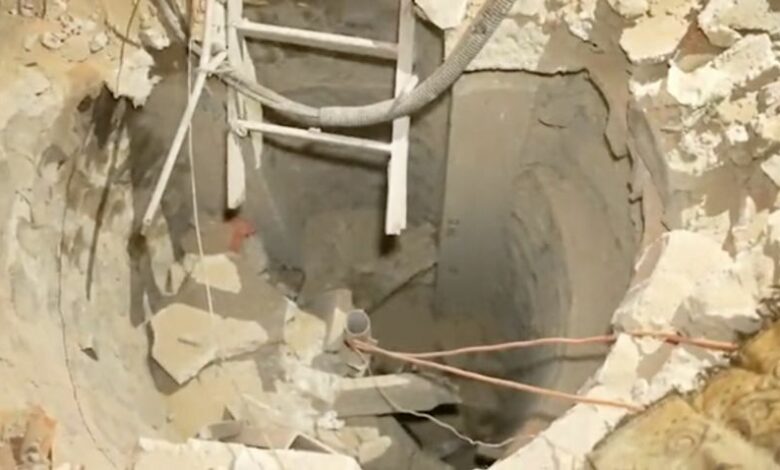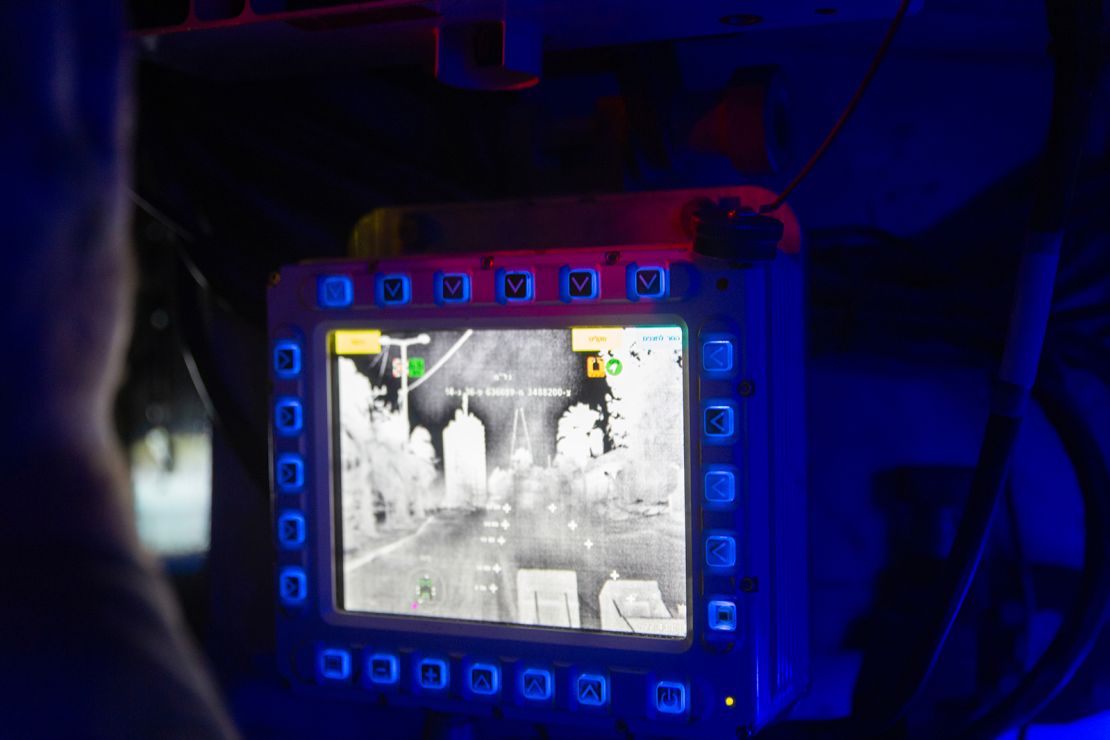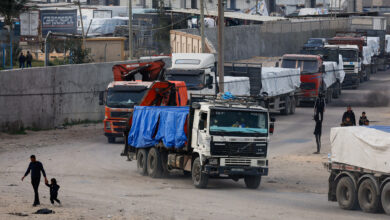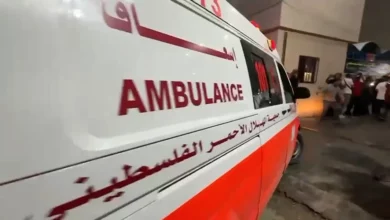
Even in the darkness, the utter devastation in northern Gaza is clear as day. The empty shells of buildings, illuminated by the last shreds of light, lurch out of the landscape on the dirt roads across the Gaza Strip. At night, the only signs of life are the Israel Defense Forces (IDF) vehicles that rumble the landscape, tightening the military’s grip on the northern sector.
On Saturday night, we traveled with the IDF into Gaza to see the newly exposed tunnel shaft discovered at the compound of Al-Shifa Hospital, the enclave’s largest medical facility.
After crossing the border fence at around 9:00 in the evening, our convoy of Humvees turned off its lights, relying on night vision goggles to traverse the Gaza Strip. We would spend the next six hours inside Gaza, much of that time spent getting back and forth from the tunnel shaft.
Along our path, virtually every building bore the scars of wartime damage. Many structures were destroyed entirely, while others were hardly recognizable as anything more than twisted metal. If there was life here, it had long since departed. Residents had either moved south or been killed during six weeks of war.

Our first stop was a location on the beach where the IDF had set up a staging area. From there, we moved into armored personnel carriers with several other reporters for the last kilometer to the hospital. The only view outside came through a night-vision screen. But even in black and white, the level of destruction was shocking.
Inside Gaza City, the skeletal remains of apartment towers and high-rise buildings packed the otherwise vacant city streets. Even if we could speak to Palestinians while embedded with the IDF, there was no one around to talk to.
CNN reported from inside Gaza under IDF media escort at all times. As a condition for journalists to join this embed, media outlets had to submit footage filmed in Gaza to the Israeli military for review and agreed not to reveal sensitive locations and soldiers’ identities. CNN retained editorial control over the final report.
As we stepped out of the armored vehicle, we were enveloped by utter darkness. We were only allowed to use our red lights to navigate to a nearby building, where we waited until Israeli forces already on the ground secured the area. The tunnel shaft was very close by, but it was entirely exposed.
The commander in charge of our group, Lt. Col. Tom said this tunnel is significantly larger than others he had seen before. “This is a big tunnel,” he said. “I have encountered tunnels — in 2014 in [Operation] Protective Edge, I was a company commander — and this tunnel is an order of magnitude bigger than a standard tunnel.”
We had expected to hear fighting once we entered Gaza City itself. Instead, we heard almost complete silence. Only once during our roughly 45 minutes at the hospital did we hear the distant sound of small arms fire, and it was impossible to tell how far away it was in the midst of an urban environment. The rest of the time, the silence made the darkness feel even more oppressive.

It was nearing midnight as we walked the last few feet to the exposed tunnel shaft. The IDF had promised “concrete evidence” that Hamas was using the hospital complex above ground as cover for what it called terror infrastructure underneath, including a command and control hub.
Several days earlier, the IDF had released what it said was the first batch of evidence, which included weapons and ammunition they said they found inside the hospital itself. But the pictures were a far cry from proving that Hamas had a facility underneath, and a CNN investigation found that some of the guns had been moved around.
The discovery of the tunnel shaft the next day was more compelling, showing an entrance to something underground. But even then, it was unclear what it was or how far down it went. This is what everyone has been trying to understand.
Standing on the edge of the tunnel shaft, it was apparent that the structure itself was substantial. At the top, the remains of a ladder hung over the lip of the opening. In the center of the round shaft, a center pole looked like a hub for a spiral staircase. The shaft itself extended down farther than we could see, especially in the meager light of our headlamps.
Video released by the IDF from inside the shaft showed what we could not see from the top of the opening. The video shows a spiral staircase leading down into a concrete tunnel. The IDF said the tunnel shaft extends downwards approximately 10 meters and the tunnel runs for 55 meters. At its end stands a metal door with a small window.
“We need to demolish the underground facility that we found,” said IDF spokesperson Rear Admiral Daniel Hagari. “I think the leadership of Hamas is in great pressure because we found this facility, and we are now going to demolish it. It’s going to take us time. We’re going to do it safely, but we’re going to do it.”
It is arguably the most compelling evidence thus far that the IDF has offered that there may be a network of tunnels below the hospital. It does not establish without a doubt that there is a command center under Gaza’s largest hospital, but it is clear that there is a tunnel down below. Seeing what connects to that tunnel is absolutely critical.
For Israel, the stakes could not be higher. Israel has publicly asserted for weeks, if not years, that Hamas has built terror infrastructure below the hospital. The ability to continue to prosecute the war in the face of mounting international criticism depends to a large extent on Israel being able to prove this point.
Hamas has repeatedly denied that there is a network of tunnels below Shifa hospital. Health officials who have spoken with CNN have said the same, insisting it is only a medical facility.
As is so rarely the case in the Israeli-Palestinian conflict, this answer truly is black and white. Either there is an underground series of tunnels below the hospital. Or there is not.




